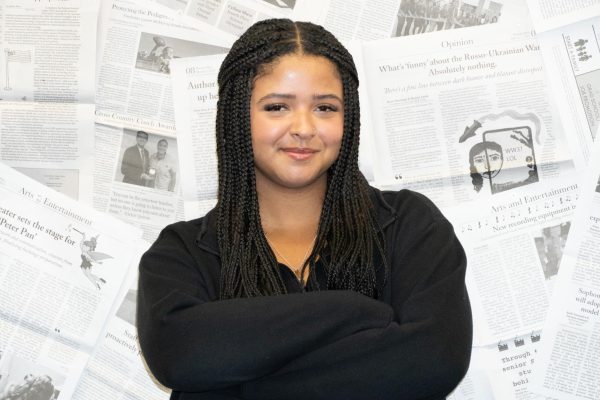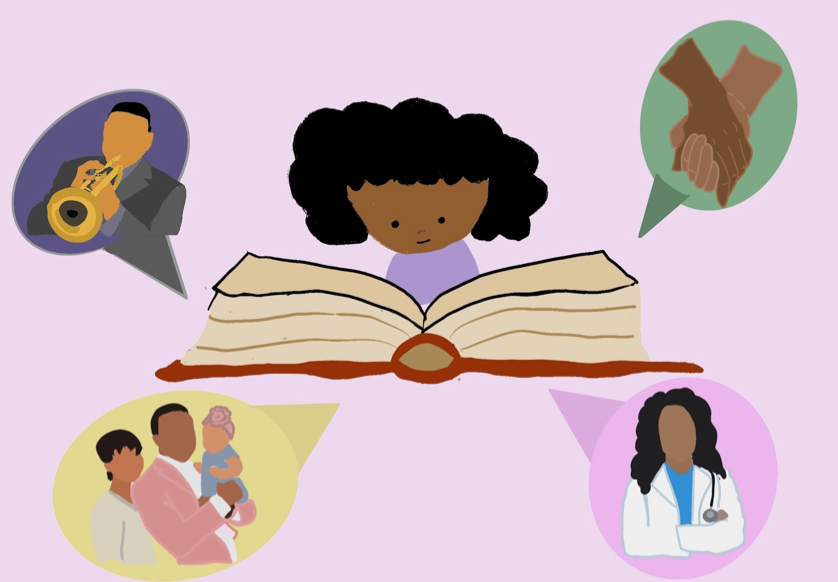Black Joy Belongs in the Classroom
Representation in classroom materials should include positive stories that uplift Black students rather than perpetuate misunderstandings. With only 28.5% of Black graduates meeting UC/CSU requirements according to IUSD’s Population Snapshot, obstacles hindering their success, like reducing the Black experience to racism, should be at the forefront of educational concerns.
After the wave of Black Lives Matter support in 2020, IUSD adopted a resolution to support the Black community, committing to inclusivity in education by implementing a curriculum that supports diversity and training staff to do the same. Nevertheless, students read literature like “To Kill a Mockingbird” and study Black life in the context of racism and hardship.
Instead of highlighting trauma, schools should celebrate achievement through the inclusion of Black joy, anything that uplifts Black culture, in their English curriculum.
Portola High became more cognizant of racial inequalities with projects like the short film series “Belonging,” which discusses different groups on campus, yet the school struggles to provide positive representation. The use of negative stories in classrooms undermines the complexity of Black life, painting a one-dimensional picture of an underrepresented group on campus and contributing to the deprivation of their well-being.
As a minority group, Black students face disproportionate challenges. According to IUSD’s Population Snapshot, they make up only 2.1% of students but experience 25.8% of absences.
Black students are exposed to problems they already face through classroom materials that emphasize hardships. However, the National Museum of African American History and Culture states that Black joy gives people an opportunity to heal from the past and gain control over their own lives.
Additionally, repetitive negativity miseducates students from different backgrounds about Black life and encourages isolation among Black students who may feel misunderstood. Black life is diverse, and English courses should reflect that not every experience is the same nor can be represented by literature focused on a singular topic.
Similarly, Black history cannot be reduced to slavery or racism. Although it affects the daily lives of Black people, they are more than just the oppressed. Their struggles coexist with the joy in their lives. Students should be able to see themselves in the materials they study, like that of Black culture, and feel inspired by success stories they read.
“The Black experience is also shown to consistently be one of tragedy and downfall, seemingly for the sole color of their skin, when we triumph through art for instance or with great stories of love,” founder and co-president of the Black Student Union and junior Gabe Mutsvangwa said.
However, it could be said that funding has limited the availability of diverse literature in classrooms. Although this may be true, ultimately schools should prioritize the inclusion of Black Joy in their curriculum as positive representation helps students to have healthy self-image and feel welcome in their community.
In a New York Times article, Yale professor David Blight explains he withdrew his endorsement of the College Board’s proposed AP African American Studies after sections of Black art and literature were removed.
The curriculum was an incomplete study of Black life as it lacked diverse materials that would portray its complexity. The inclusion of elements like Black joy alongside significant hardships in history would serve to improve the representation of Black students in the classroom.
There is still more to be done to ensure that Black life is portrayed in all of its authenticity. If treated insensitively, the study of Black trauma could do more harm than intended to the social and educational success of Black students.
Thus, classroom materials should emphasize the rich culture and achievement across Black life and history, giving students the means to make change.
Your donation will support the student journalists of Portola High School. Your contribution will allow us to purchase equipment and cover our annual website hosting costs.

Camille Clement is a staff writer for her first year on the Portola Pilot. Through her work, she hopes to amplify voices in the community and inform her...

Sidra Asif is the Back Page Editor and Social Media Manager for her third year on the Pilot. Outside of creating content for the newspaper, you can find...




